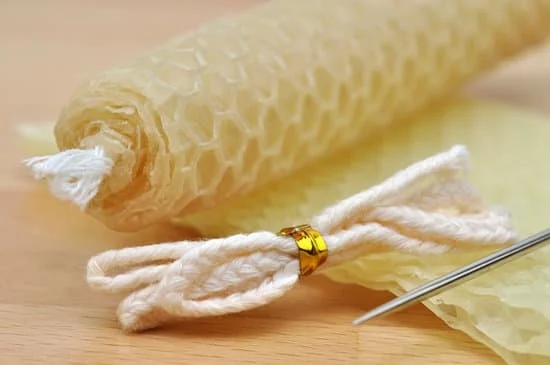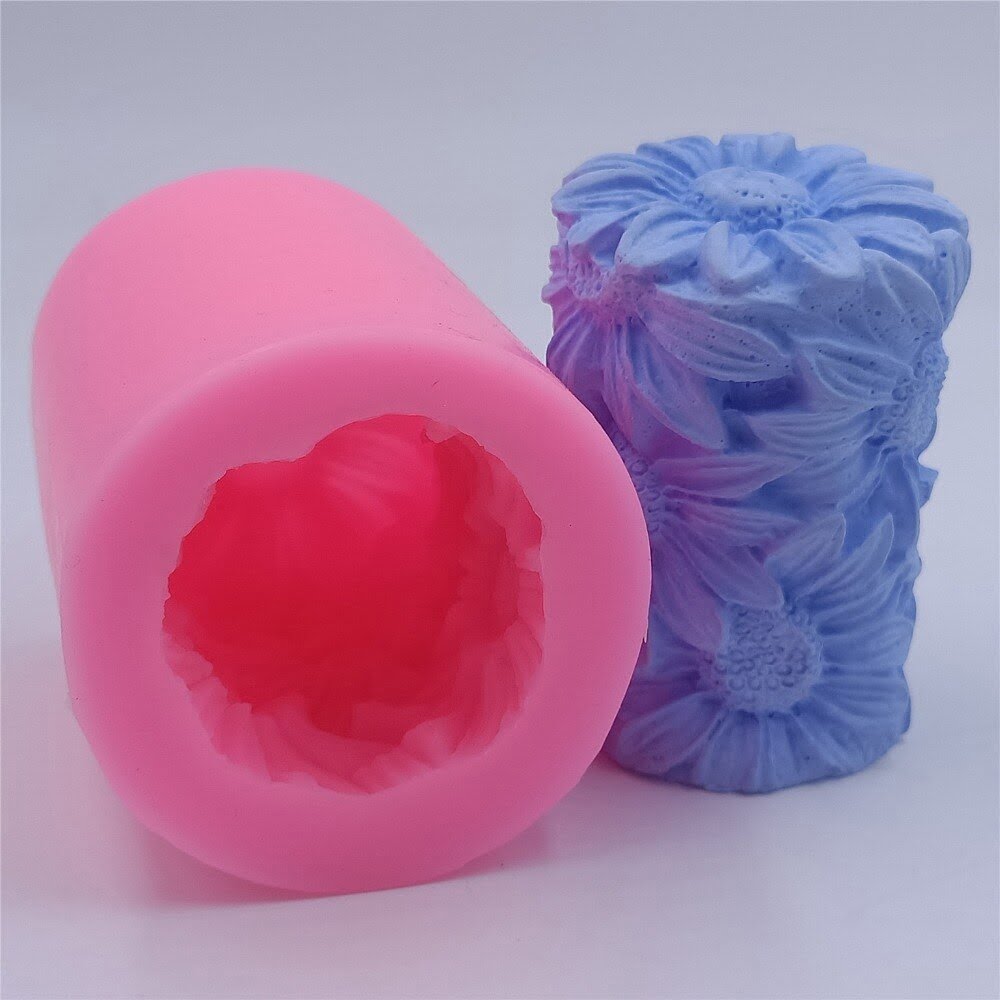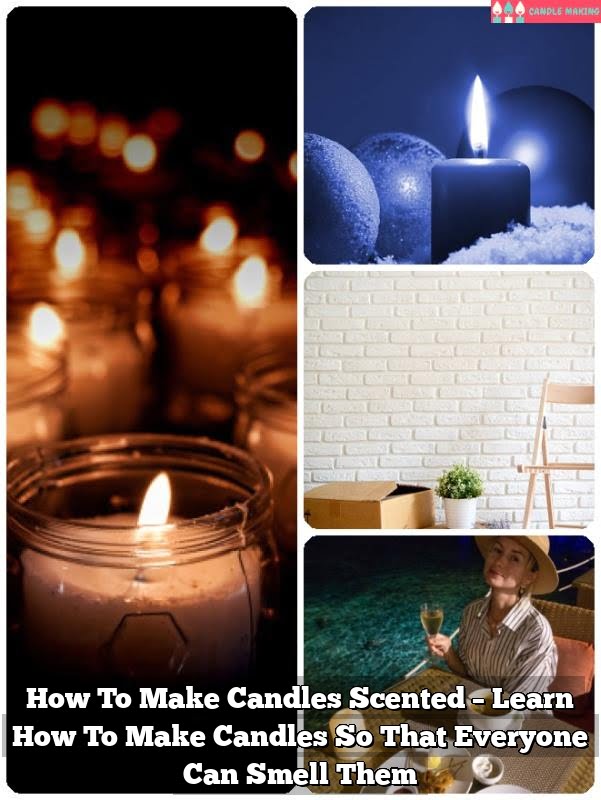Candle making is a beloved craft that allows individuals to express their creativity and create beautiful, functional pieces for ambiance and decoration. One of the key components in successful candle making is choosing the right wax as the base material. When it comes to selecting the best wax for making candles, there are various options available on the market, each with its own unique characteristics and benefits.
The choice of wax can greatly impact the quality, burn time, scent throw, and overall appearance of your candles. Understanding the different types of waxes used in candle making and what makes a wax suitable for this purpose is crucial in creating high-quality candles that meet your expectations. Whether you prefer natural waxes like soy or beeswax, or traditional options such as paraffin wax, there are key factors to consider when selecting the best wax for your candle projects.
In this detailed guide on finding the best wax for making candles, we will explore the various types of waxes commonly used in candle making, delve into what qualities make a particular wax suitable for this craft, compare popular options like soy wax versus paraffin wax, and provide helpful tips for choosing the right wax for your specific candle making endeavors.
Additionally, we will highlight the top 5 best waxes for making candles in 2021 to assist you in selecting the perfect option for your next candle-making project.
Types of Waxes Used for Candle Making
When it comes to choosing the best wax for making candles, there are several options available in the market, each with its unique qualities and benefits. The type of wax used can greatly influence the burning time, scent throw, and overall quality of the candle. Some of the most common types of waxes used for candle making include soy wax, paraffin wax, beeswax, coconut wax, and palm wax.
Soy Wax
Soy wax is a popular choice among candle makers due to its natural origins and eco-friendly profile. It is made from soybean oil and burns cleaner than traditional paraffin wax. Soy wax also has a longer burn time and better scent throw, making it ideal for fragranced candles. Additionally, soy wax is easy to work with and readily accepts dyes and fragrance oils.
Paraffin Wax
Paraffin wax is one of the most widely used waxes in the candle-making industry due to its affordability and accessibility. It has excellent scent throw capabilities and comes in different melting points suitable for various candle types. However, paraffin wax is derived from petroleum, which may raise environmental concerns for some consumers. Despite this drawback, many candle makers still prefer paraffin wax for its versatility and proven performance.
Beeswax
Beeswax is a natural byproduct produced by honey bees and has been used for centuries in candle making. Known for its beautiful golden hue and sweet aroma, beeswax candles have a natural honey scent when burned.
Beeswax candles also have a longer burn time compared to other waxes and produce a bright flame. Although beeswax can be more expensive than other waxes, its natural properties make it a favorite among those seeking a sustainable and high-quality option for their candle projects.
What Makes a Wax Suitable for Candle Making
When it comes to making candles, choosing the right wax is crucial to the success of your candle-making project. Not all waxes are created equal, and each type of wax has its own unique characteristics that can impact the quality and performance of your candles. So, what makes a wax suitable for candle making? Here are some key factors to consider when selecting the best wax for your candle projects:
Factors to Consider When Choosing a Wax for Candle Making
- Melting Point: The melting point of the wax determines how well it will hold fragrance and color. Waxes with higher melting points are better suited for container candles, while waxes with lower melting points are ideal for creating taper or pillar candles.
- Scent Throw: Some waxes have better scent throw capabilities than others. If you want your candles to fill a room with a strong, pleasant aroma, be sure to choose a wax that can hold fragrance oils effectively.
- Burn Time: The burn time of a candle is determined by the type of wax used. Some waxes burn longer and cleaner than others, so consider how long you want your candles to last when selecting a wax for your projects.
In addition to these factors, it’s also important to consider the sustainability and eco-friendliness of the wax you choose. Many candle makers today opt for natural waxes like soy wax or beeswax because they are renewable resources that produce clean-burning candles. Natural waxes are also biodegradable, making them a more environmentally friendly choice compared to petroleum-based paraffin wax.
Ultimately, the best wax for making candles is one that meets your specific needs and preferences as a candle maker. Whether you value sustainability, scent throw, burn time, or ease of use, there are several options available on the market that can cater to your individual requirements. By considering these key factors and doing thorough research on different types of waxes, you can confidently choose the best wax for your candle-making endeavors.
Benefits of Using Natural Waxes
When it comes to candle making, using natural waxes offers a wide array of benefits that appeal to both candle makers and consumers. One of the primary advantages of natural waxes is their eco-friendly nature. Natural waxes like soy wax, beeswax, and coconut wax are derived from renewable resources, making them a sustainable choice for environmentally conscious individuals. By choosing natural waxes, candle makers can reduce their carbon footprint and support ethical practices in the industry.
In addition to being eco-friendly, natural waxes also offer a cleaner and healthier burning experience compared to synthetic waxes. Natural waxes do not produce harmful byproducts when burned, such as toxins or carcinogens.
This means that candles made with natural waxes are safer for indoor air quality and overall health. The clean burn of natural waxes also results in less soot buildup on walls and ceilings, making them a preferred choice for those who prioritize cleanliness in their living spaces.
Furthermore, candles made with natural waxes often have a longer burn time and better scent throw compared to candles made with synthetic waxes. Natural waxes have the ability to hold more fragrance oils, resulting in a stronger and more potent scent when the candle is lit.
This makes natural wax candles a popular choice for those looking to create aromatic atmospheres in their homes or spaces. Overall, the benefits of using natural waxes make them a top choice for candle makers who value quality, sustainability, and health-conscious practices.
Comparison of Soy Wax vs Paraffin Wax
When it comes to choosing the best wax for making candles, two popular options that often come up in discussions are soy wax and paraffin wax. Both waxes have their own unique properties and benefits that make them suitable for candle making. Understanding the differences between these two waxes can help you make an informed decision when selecting the right wax for your candle projects.
Soy wax is a natural and renewable resource made from soybean oil, whereas paraffin wax is a byproduct of petroleum refining. Soy wax is known for its clean-burning properties, while paraffin wax is valued for its ability to hold fragrance well and produce vibrant colors. Soy wax is also biodegradable, making it a more environmentally friendly option compared to paraffin wax.
In terms of performance, soy wax tends to burn slower and cooler than paraffin wax, resulting in a longer-lasting candle with a more subtle scent throw. On the other hand, paraffin wax has a higher melting point which allows for better scent diffusion throughout the room when the candle is lit.
When deciding between soy wax and paraffin wax, consider factors such as environmental impact, burning characteristics, fragrance retention, and personal preference to choose the best wax for your candle making endeavors.
Beeswax
When it comes to choosing the best wax for making candles, Beeswax is often considered a classic choice by many experienced candle makers. Beeswax is a natural wax that is derived from honeybees and offers a range of benefits that make it ideal for candle making.
One of the key advantages of using beeswax is its natural aroma, which adds a pleasant honey-like scent to the candles without the need for additional fragrances. This makes beeswax candles perfect for those who prefer a more subtle and natural scent in their living spaces.
In addition to its aromatic qualities, beeswax also has a higher melting point compared to other waxes, which results in longer burning times for candles made with this wax. This means that beeswax candles not only offer a beautiful scent but also provide an extended period of enjoyment for those who light them.
Furthermore, beeswax is known for its clean-burning properties, producing minimal soot and pollutants when burned. This makes beeswax candles an eco-friendly choice for consumers who are conscious of their environmental impact.
For those looking to delve into the world of candle making using beeswax, it is important to note that this wax can be slightly more expensive compared to other options such as soy or paraffin wax. However, the unique qualities and benefits of beeswax make it worth the investment for many enthusiasts who value high-quality candles with natural ingredients.
With its rich history and timeless appeal, beeswax continues to hold its place as one of the best waxes for making candles in the crafting community.
| Benefits of Beeswax | Considerations |
|---|---|
| Natural aroma without added fragrances | Slightly higher cost compared to other waxes |
| Longer burning times due to higher melting point | High-quality option valued by candle enthusiasts |
| Clean-burning properties with minimal soot | Eco-friendly choice for environmentally conscious consumers |
Tips for Choosing the Best Wax for Your Candle Projects
When it comes to candle making, choosing the right wax is crucial for the quality and performance of your candles. The best wax for making candles depends on various factors such as the type of candle you want to create, your budget, and personal preferences. One of the most important considerations when selecting a wax is its melting point.
Different waxes have different melting points, which can affect how well your candle burns and how long it lasts. For container candles, soy wax with a lower melting point is often preferred, while pillar candles may require waxes with higher melting points.
In addition to melting point, another important factor to consider when choosing the best wax for making candles is the fragrance throw. Some waxes are better at holding and releasing fragrances than others, so if you plan on adding scents to your candles, you’ll want to choose a wax that can enhance the aroma of your chosen fragrance oils.
Natural waxes like soy wax and beeswax are known for their excellent fragrance throw and are popular choices among candle makers who prioritize scent.
When selecting the best wax for making candles, it’s also essential to consider the finish and appearance of your candles. Soy wax is known for its smooth finish and ability to hold vibrant colors well, making it a favorite among those who prefer a more modern look for their candles.
On the other hand, beeswax has a naturally golden hue and distinctive honey-like scent that appeals to traditionalists looking for a classic touch in their candle creations. Ultimately, the best wax for making candles will depend on your specific needs and preferences as a candle maker.
| Factors | Considerations |
|---|---|
| Melting Point | Different waxes have different melting points – consider based on type of candle |
| Fragrance Throw | Some waxes hold and release fragrances better than others – choose based on preference |
| Finish and Appearance | Consider how smooth or traditional you want your candles to look – select wax accordingly |
Top 5 Best Waxes for Making Candles in 2021
When it comes to making candles, choosing the best wax is essential for creating high-quality products. In 2021, there are several top waxes that stand out for their performance and versatility in candle making. One of the most popular options is soy wax, known for its clean burning properties and excellent scent throw. Soy wax is derived from soybean oil, making it a renewable and eco-friendly choice for candle makers looking for sustainable materials.
Another top pick for candle making in 2021 is coconut wax, which offers a creamy texture and excellent fragrance retention. Coconut wax also has a long burn time, making it a favorite among candle enthusiasts who want long-lasting candles. Beeswax is another classic choice that continues to be favored by many candle makers for its natural fragrance and clean-burning qualities. Beeswax candles have a warm glow and produce very little soot when burned.
For those looking for a more traditional option, paraffin wax remains a popular choice in 2021 due to its affordability and ease of use. Paraffin wax can hold a high amount of fragrance and color, making it ideal for creating vibrant and aromatic candles.
Finally, palm wax is gaining popularity as an eco-friendly option that produces unique crystalline patterns when poured. Palm wax candles have a beautiful finish and provide excellent scent throw, making them a top choice for many candle makers in 2021.
Conclusion and Final Thoughts on Choosing the Right Wax for Your Candle Making Endeavors
When it comes to choosing the best wax for making candles, there are several factors to consider. From the type of wax to its benefits and comparison with other varieties, selecting the right wax can significantly impact the quality and performance of your candle projects.
Natural waxes like soy wax and beeswax have gained popularity for their eco-friendly properties and clean-burning nature. However, paraffin wax still remains a widely used option in candle making due to its affordability and versatility.
For those looking to start their candle making journey or experienced crafters wanting to experiment with different waxes, it is essential to understand what makes a wax suitable for candle making. Factors such as melt point, fragrance throw, burn time, and appearance all play a role in determining the best wax for your specific needs. Ultimately, the choice of wax will depend on personal preferences, budget constraints, and desired outcomes in terms of aesthetics and performance.
In conclusion, the best wax for making candles ultimately comes down to individual preferences and project requirements. Whether you opt for the classic choice of beeswax, the environmentally-friendly option of soy wax, or the more traditional paraffin wax, each has its unique characteristics that can enhance your candle-making endeavors.
By considering the tips outlined in this guide and exploring different options in the market, you can find the perfect wax that suits your creative vision and crafting goals. Happy candle making.
Frequently Asked Questions
What Is the Healthiest Wax for Candles?
The healthiest wax for candles is typically considered to be soy wax. Soy wax is natural, renewable, and burns cleanly without releasing harmful chemicals or toxins into the air like some other waxes.
What Wax to Avoid in Candles?
Paraffin wax is one type of wax to avoid in candles if you are concerned about potential health risks. This type of wax is a byproduct of petroleum refining and can release harmful chemicals when burned, contributing to indoor air pollution.
What Wax Is Used in Luxury Candles?
Luxury candles often use a high-quality wax such as coconut wax or beeswax. Coconut wax provides a clean burn and excellent scent throw, while beeswax has natural air purifying properties. These premium waxes contribute to the overall luxurious experience of the candle.

Welcome to my candle making blog! In this blog, I will be sharing my tips and tricks for making candles. I will also be sharing some of my favorite recipes.





